Abstract
This study evaluates risk factors associated with low birthweight in an African-American population. Records of 225 women delivering liveborn, nonanomalous singletons weighing < 2500 g were reviewed. The next parturient, matched for race only, of a similar infant weighing > or = 2500 g constituted the control. This case-control study was conducted among women delivering at University Hospital in New Orleans during 1996-1997. Mothers of infants weighing < 2500 g were more likely to not have finished high school (49% versus 38%), to have received no prenatal care (26% versus 7%), or to have five or fewer visits if care was obtained (52% versus 33%). The mother was more likely to weigh < 60 kg (49% versus 32%), to smoke (24% versus 11%), or to have used cocaine (18% versus 5%) or alcohol (11% versus 5%). Parturients of low birthweight newborns were more likely to have had a prior low birthweight infant (44% versus 19%) and themselves to have had a birthweight < 2500 g (30% versus 13%). Regression analysis confirmed the importance of three parameters as associated with low birthweight: no prenatal care (odds ratio [OR] = 6.0 [1.1-31.4]), alcohol use (OR = 5.2 [1.1-24.8], and low maternal birthweight (OR = 3.9 [1.9-7.9]. These results indicate that evaluations of low birthweight in African Americans should consider maternal birthweight and that efforts to improve pregnancy outcome should be structured in terms of generations.
Full text
PDF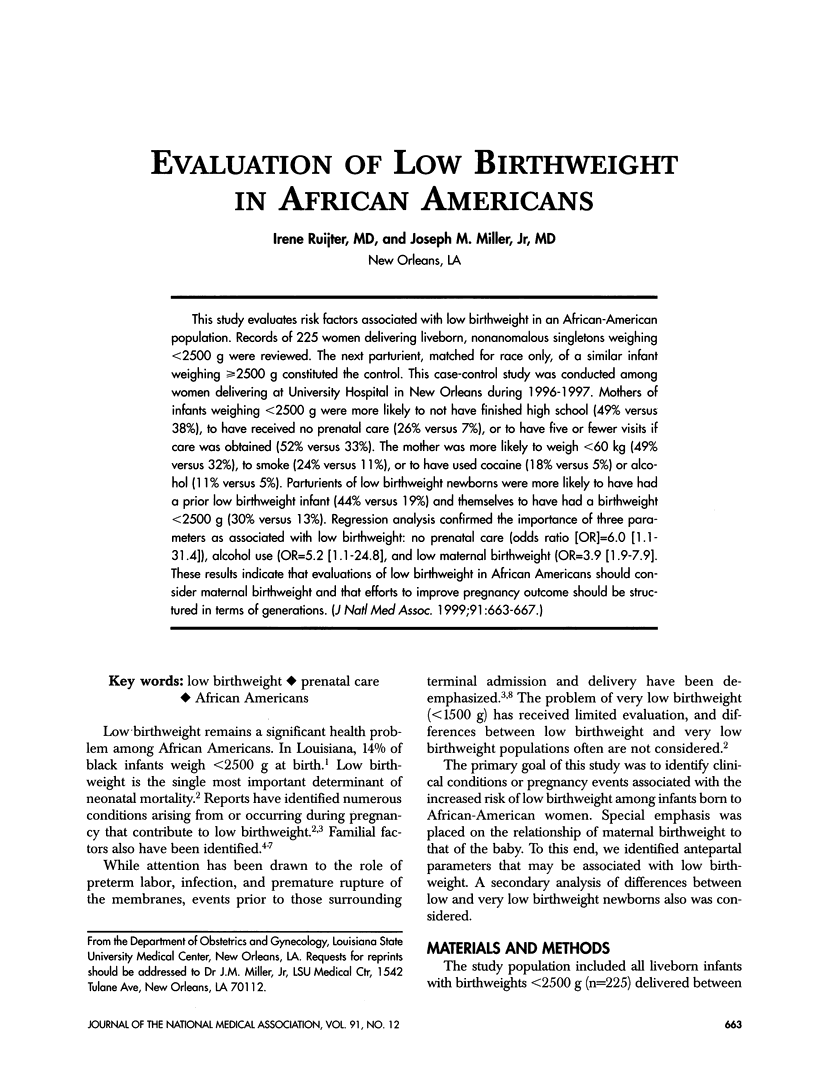
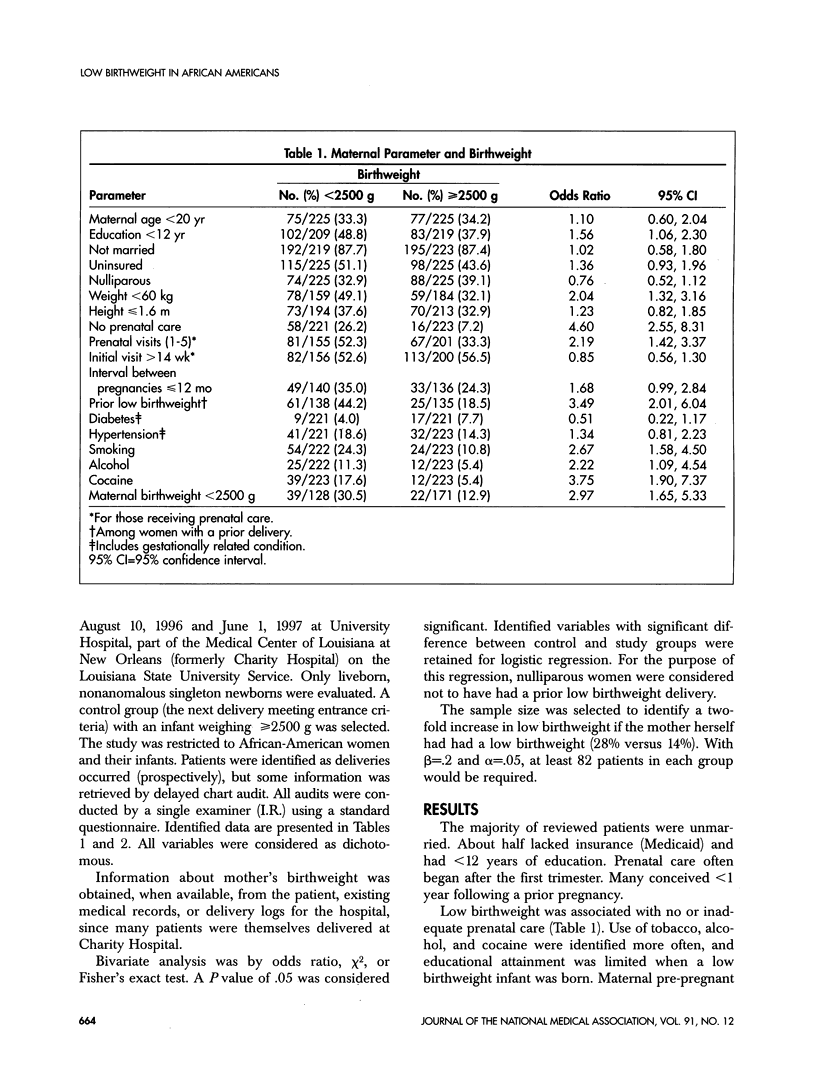
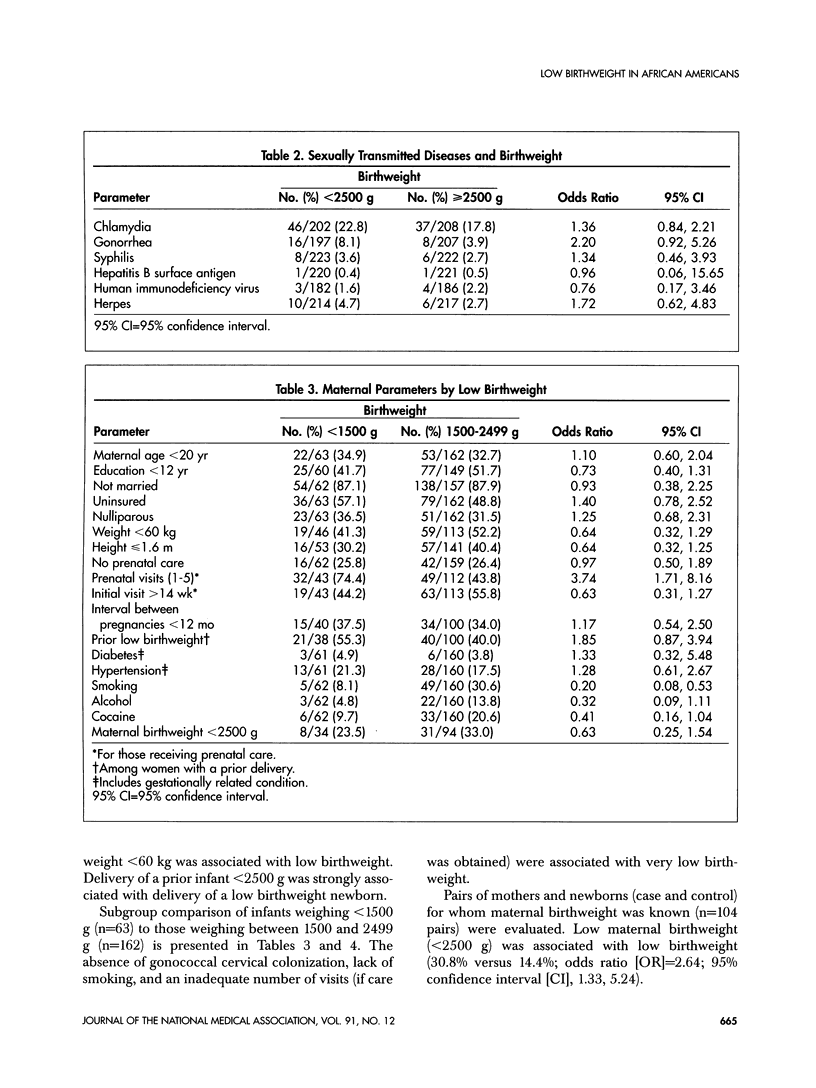
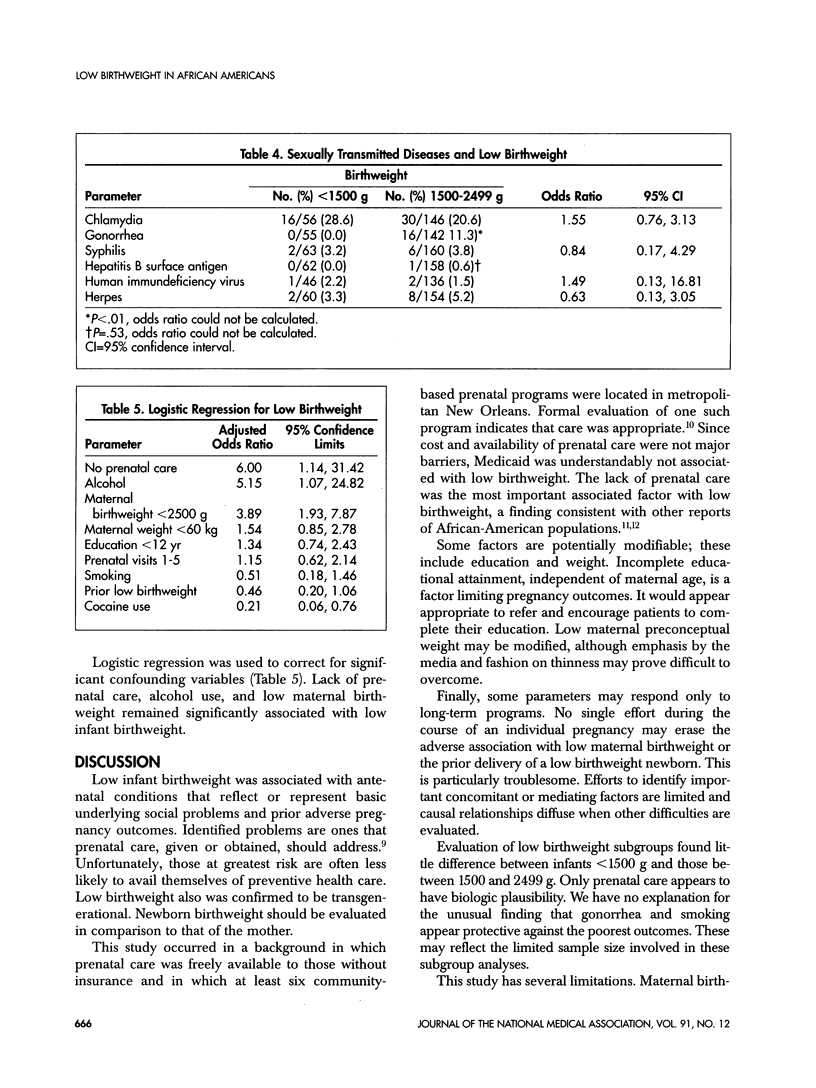
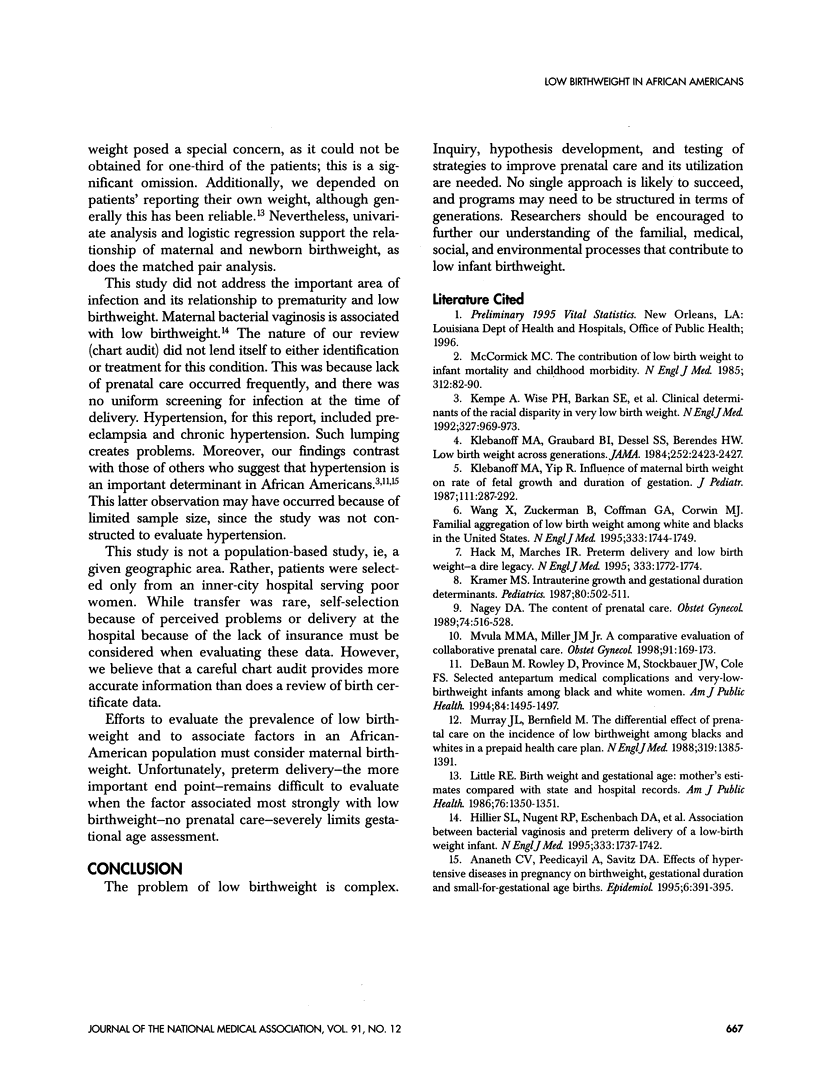
Selected References
These references are in PubMed. This may not be the complete list of references from this article.
- Ananth C. V., Peedicayil A., Savitz D. A. Effect of hypertensive diseases in pregnancy on birthweight, gestational duration, and small-for-gestational-age births. Epidemiology. 1995 Jul;6(4):391–395. doi: 10.1097/00001648-199507000-00011. [DOI] [PubMed] [Google Scholar]
- DeBaun M., Rowley D., Province M., Stockbauer J. W., Cole F. S. Selected antepartum medical complications and very-low-birthweight infants among black and white women. Am J Public Health. 1994 Sep;84(9):1495–1497. doi: 10.2105/ajph.84.9.1495. [DOI] [PMC free article] [PubMed] [Google Scholar]
- Hack M., Merkatz I. R. Preterm delivery and low birth weight--a dire legacy. N Engl J Med. 1995 Dec 28;333(26):1772–1774. doi: 10.1056/NEJM199512283332611. [DOI] [PubMed] [Google Scholar]
- Hillier S. L., Nugent R. P., Eschenbach D. A., Krohn M. A., Gibbs R. S., Martin D. H., Cotch M. F., Edelman R., Pastorek J. G., 2nd, Rao A. V. Association between bacterial vaginosis and preterm delivery of a low-birth-weight infant. The Vaginal Infections and Prematurity Study Group. N Engl J Med. 1995 Dec 28;333(26):1737–1742. doi: 10.1056/NEJM199512283332604. [DOI] [PubMed] [Google Scholar]
- Kempe A., Wise P. H., Barkan S. E., Sappenfield W. M., Sachs B., Gortmaker S. L., Sobol A. M., First L. R., Pursley D., Rinehart H. Clinical determinants of the racial disparity in very low birth weight. N Engl J Med. 1992 Oct 1;327(14):969–973. doi: 10.1056/NEJM199210013271401. [DOI] [PubMed] [Google Scholar]
- Klebanoff M. A., Graubard B. I., Kessel S. S., Berendes H. W. Low birth weight across generations. JAMA. 1984 Nov 2;252(17):2423–2427. [PubMed] [Google Scholar]
- Klebanoff M. A., Yip R. Influence of maternal birth weight on rate of fetal growth and duration of gestation. J Pediatr. 1987 Aug;111(2):287–292. doi: 10.1016/s0022-3476(87)80089-6. [DOI] [PubMed] [Google Scholar]
- Kramer M. S. Intrauterine growth and gestational duration determinants. Pediatrics. 1987 Oct;80(4):502–511. [PubMed] [Google Scholar]
- Little R. E. Birthweight and gestational age: mothers' estimates compared with state and hospital records. Am J Public Health. 1986 Nov;76(11):1350–1351. doi: 10.2105/ajph.76.11.1350. [DOI] [PMC free article] [PubMed] [Google Scholar]
- McCormick M. C. The contribution of low birth weight to infant mortality and childhood morbidity. N Engl J Med. 1985 Jan 10;312(2):82–90. doi: 10.1056/NEJM198501103120204. [DOI] [PubMed] [Google Scholar]
- Murray J. L., Bernfield M. The differential effect of prenatal care on the incidence of low birth weight among blacks and whites in a prepaid health care plan. N Engl J Med. 1988 Nov 24;319(21):1385–1391. doi: 10.1056/NEJM198811243192105. [DOI] [PubMed] [Google Scholar]
- Mvula M. M., Miller J. M., Jr A comparative evaluation of collaborative prenatal care. Obstet Gynecol. 1998 Feb;91(2):169–173. doi: 10.1016/s0029-7844(97)00649-2. [DOI] [PubMed] [Google Scholar]
- Nagey D. A. The content of prenatal care. Obstet Gynecol. 1989 Sep;74(3 Pt 2):516–528. [PubMed] [Google Scholar]
- Wang X., Zuckerman B., Coffman G. A., Corwin M. J. Familial aggregation of low birth weight among whites and blacks in the United States. N Engl J Med. 1995 Dec 28;333(26):1744–1749. doi: 10.1056/NEJM199512283332606. [DOI] [PubMed] [Google Scholar]


